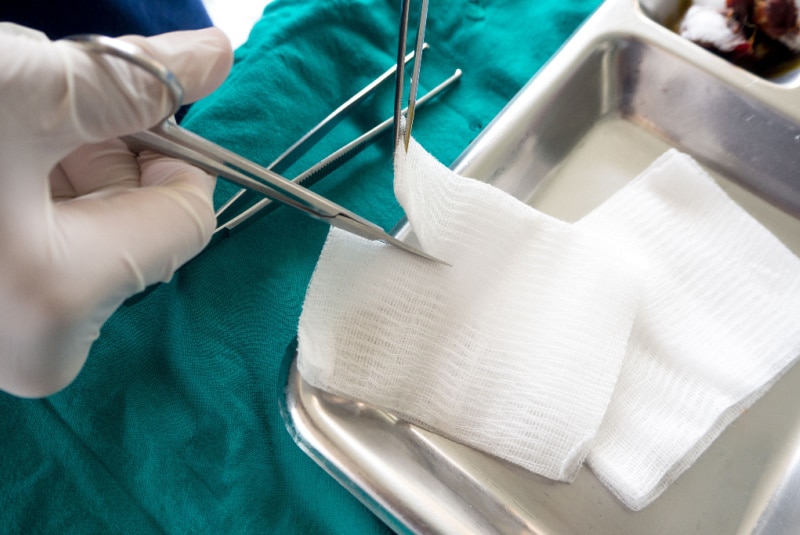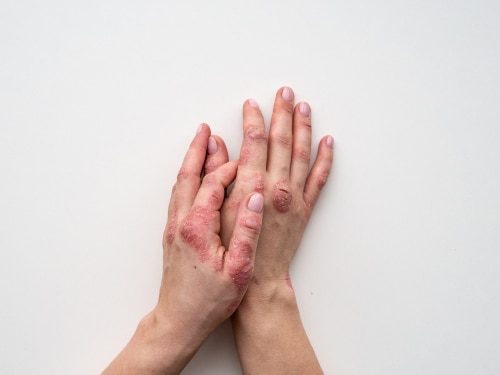
The Basics of Wound Care and The Role Cadavers Play
The Growth of Wound Care
- Washing the wound
- Making the plasters
- Bandaging
- Ancient Egyptians applied a paste of honey, grease, and lint into an open wound to remove the skin and pus and encourage wound healing.
- Ancient Greeks who focused more on the cleanliness and washing of wounds with clean water, vinegar, and wine.
- Ancient Romans who were the first describe the four cardinal signs of inflammation which “rubor, tumor, calor, et dolar” which translates to “redness, swelling, heat and pain”.
- In the middle ages, the customary practices were to allow a wound to rot a bit and most wound care was carried about by nuns.
- Dominique Jean Larrey, was the first physician to document the necessity for early amputation of any limb injury where the limb would not be saved. He noted that early amputation would create a clean, viable wound.
- In 1854, Florence Nightingale, the founder of modern nursing, believed that cleanliness, fresh air, quietness, good nutrition and effectively performed treatments would improve the care of not only the wound but the patient as well.
- In the 1800s, textbooks that focused on wound care began to address the importance of skin cleaning and removal of foreign matter.
- In 1861, Louis Pasteur discovered Germ Theory. This introduced simple practices such as hand washing, sterilizing surgical equipment, and wound dressings which lead to significantly faster healing times.
- Joseph Lister is credited with the development of the first wet-to-dry dressing that used a clean cotton batting soaked in carbolic acid to pack wounds.
- In 1890, the founder of Johnson & Johnson, began using the Lister Antiseptic System, the treatment of compound fractures with carbolic acid, to develop gauze and wound dressing that are sterilized with dry heat, steam, and pressure.
- During 1909 to 1918, it was common practice to apply dry gauze packed with salt to the wound bed by the end of WW1, the Carrel-Dakin method that consists of continuously infusing hypochlorite solution directly into gauze to pack the wound became standard.
- Throughout the 19th century, metallic antiseptics were developed. These along with the introduction of antibiotics helped decrease mortality rates while also controlling infections. Silver ceramic powder was introduced in 1928, silver sulfadiazine was introduced in 1958 and they were both used to treat Pseudomonas infection in burn victims. In 1974, it was discovered that the application of zinc to wounds helped promote healing in zinc-deficient individuals which in turn led to the development of Unna’s zinc sulfate paste, a paste still used in treatment today.
- Wound nursing was officially established as a specialty in 1958 but the certification was NOT available until 1980.
- The moist wound healing technique was backed by George Winter, Cameron Hinman and Horward Maibach in the 1960’s which focused on creating and maintaining a moist wound healing environment vs a dry one.
What Does Proper Wound Care Look Like Today?
There are different things to do and look out for with different types of wounds. In this section, we are going to cover cuts/scrapes, surgical wounds, and minor burns.
For cuts and scrapes, you will need to clean and soothe the injury with cool water and remove any foreign object with sterilized tweezers. Avoid irritating soap, iodine, alcohol, or hydrogen peroxide. Next would be an antibiotic cream or ointment that can help reduce infection and keep the wound moist. Apply a thin layer on the wound. Then, cover with a band-aid if your injury will be rubbed by clothing to avoid risk of reopening or infection, be sure to change the bandage daily.
Finally, notice signs of healing. Your body begins healing quickly with white blood cells attacking the infection-causing bacteria and soon you will form protective scabs that you want to avoid touching or removing.

For minor burns, cool the area immediately with a cold cloth or cool running water. This will stop the skin from holding the heat and continuing to burn. Next, wash the burn with non-irritating soap and water. Then, dress the burn lightly and leave any blisters that form alone because they help protect the skin.
For surgical wounds, protect your incision with a bandage for a few days and then change the dressing. Be sure to follow the care your doctor left for you for taking care of stitches or staples. It is important to keep the area dry and report any increase in redness or bleeding immediately to your doctor.
Look out for infections that can show signs such as swelling, green/yellow fluid, increased warmth, and tenderness in the incision. Other signs include swollen lymph nodes, body aches, chills, or fever. Contact a doctor if you have any of the previously stated symptoms and also if you have a wound that won’t stop bleeding after 10 minutes of pressure, is deeper than half-inch, near the eye, is ragged, caused by something rusty, has dirt or gravel in it, is very painful or is caused by an animal or human bite.
A New Approach To Treating Chronic Skin Wounds

One common way wounds are treated is using cadaver skin. Treating wounds with cadaver skin is not a new concept though, in fact cadavers’ skin was first used in 1881 for covering burn wounds. While this case failed due to graft rejection, it laid down the foundation for this technique by 1953 cadaveric skin was established as common management for burns.
Cadaver skin donated for medical use is typically referred to as allograft, homograft, or cadaver skin. To use cadaver skin, scientists created “dellurized skin” which use antibiotics to first decontaminate the skin and a combination of detergents, enzymes, and other chemicals to remove cells from the skin. This grew into delleuraized body body parts such as windpipes and scientists hope to use it for the heart and other organs.
“Imagine a house with all the furniture and people taken out — you’re left with an empty shell that is easier to populate than just building a house from scratch. In the same way, decellularized dermis provides a scaffold that the body can try to populate with its own cells. The good thing about decellularized dermis is that it has a structure and composition that the human body is already used to — the body responds more favorably to what it is used to than what it isn’t.”
– Ardeshir Bayat, a bioengineer and clinician-scientist at the University of Manchester in England
After some research and development, Bayat and his colleagues found that decellularized skin was efficient for not only chronic wounds, but acute wounds as well such as wounds from a burn. In their newest study, they removed 4 disks of skin about 5 millimeters wide from 50 healthy volunteers, for each volunteer, one wound site was left untreated and the next had the removed skin re-inserted, another was treated with an artificial skin substitute and the last was treated with decellularized skin.
The findings of this study concluded that the dellurized skin was the best for triggering growth of new blood vessels and had comparable strength to normal skin. Their next study is planned to be testing decellularized skin on a larger number of volunteers and adding electric stimulation with the hope of accelerating the integration of skin substitutes into the body.
While the use of cadaver skin has had slow progress, its progress is not foreseen to stop anytime. As researchers like Bayat continue to improve on how professionals treat wounds to chronic wounds, decellularized skin will continue to be improved upon and used in treatment. With around 100,000 skin grafts performed annually and 20,000 annual whole body donations, progress can seem slow and steady, but its outcomes can help generations to come.



